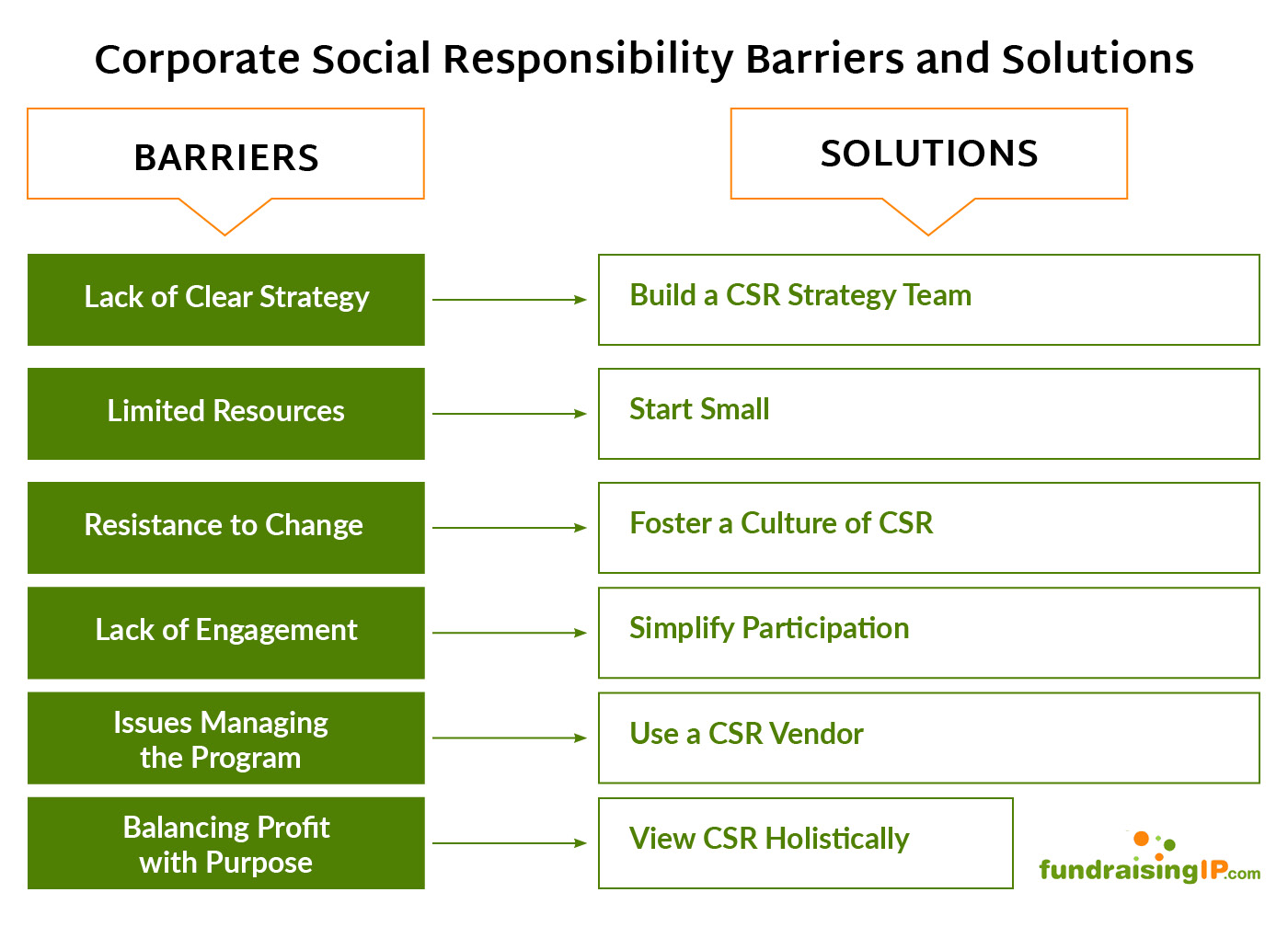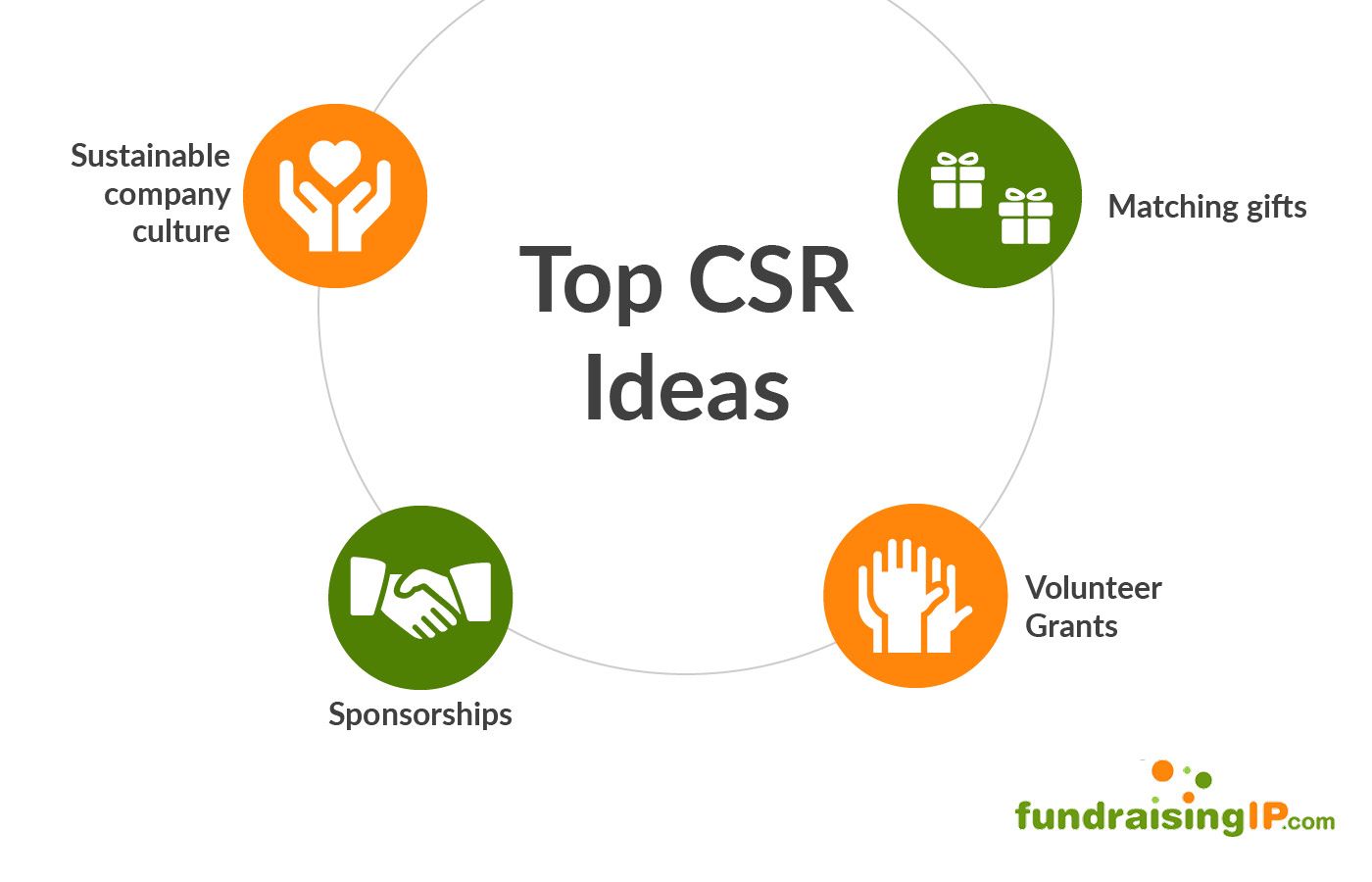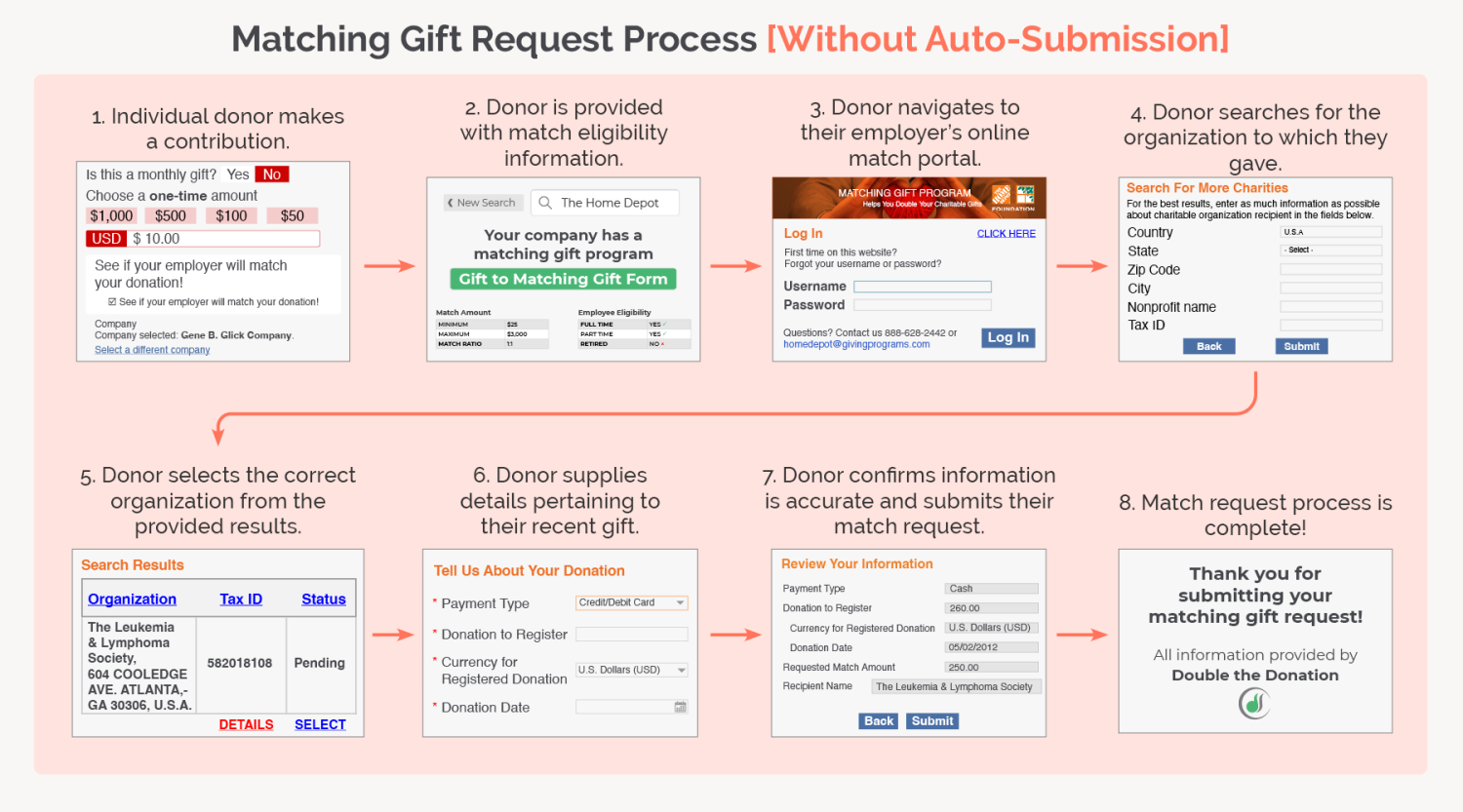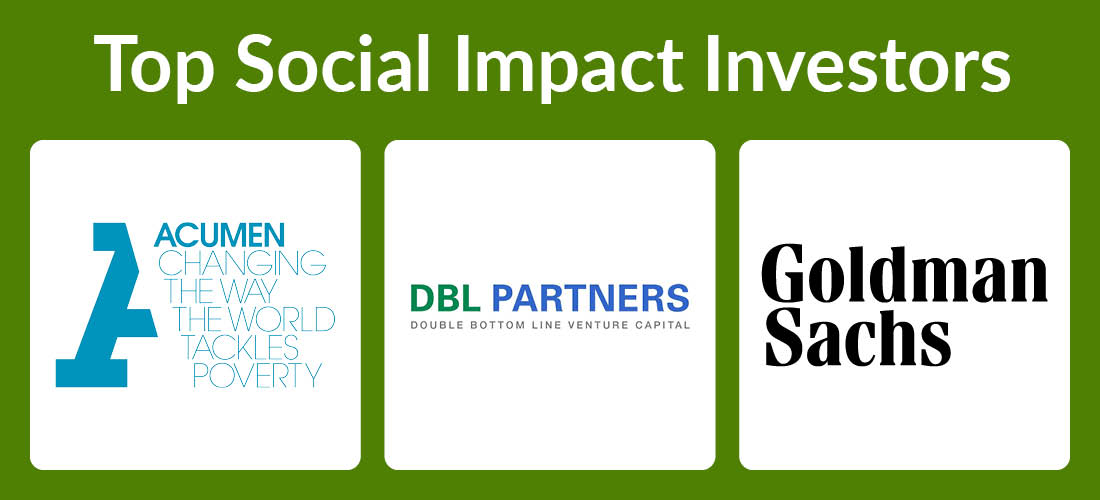As a leader in your company, you’re always on the lookout for innovative ideas to improve employee productivity, spread brand awareness, and attract talented additions to your team.
What if we told you there’s a way to achieve all that while making the world a better place? That’s where corporate social responsibility comes in.
Corporate social responsibility (CSR) is the idea that for-profit organizations should give back to their communities by donating to nonprofits, sustainably managing the company, and taking care of employees. However, there are many more ways companies can make a positive impact.
To help you create an impactful CSR strategy for your company, here’s what we’ll cover:
- Corporate Social Responsibility FAQs
- Top Corporate Social Responsibility Ideas
- Corporate Social Responsibility Trends
You have the power to positively influence your community. Don’t let the opportunity go to waste with a poor corporate giving strategy. Let’s dive into how your company can transform itself internally and externally with CSR!

Corporate Social Responsibility FAQs
As you start developing your corporate social responsibility plan, you’ll likely have some initial questions. To clear up any confusion, let’s explore some common questions company leaders tend to ask.
What are the differences between CSR, corporate giving, and corporate philanthropy?
You might have heard of these other terms to refer to charitable activity from companies, but they aren’t interchangeable. Here are the nuances between CSR, corporate philanthropy, and corporate giving:
- Corporate social responsibility is the umbrella term that refers to any socially responsible activities from companies. For instance, instituting Diversity, Equity, and Inclusion (DEI) initiatives and giving to nonprofits are examples of CSR in practice.
- Corporate giving is a subset of CSR that refers to the act of donating financial gifts, in-kind gifts, or volunteer time to nonprofits. This doesn’t include internal adjustments to company culture like employee wellness programs.
- Corporate philanthropy is a subset of corporate giving that concentrates on donating financial and in-kind gifts to nonprofits.
For the purpose of this article, we’ll focus on CSR and general ways companies can improve their societal impact.
What are the benefits of CSR for companies?
While it might seem that nonprofits benefit the most from CSR programs, there’s a lot in it for your company, too. By embracing CSR, your company can enhance the following:
- Brand reputation. Imagine you’re a consumer trying to pick between similar competing businesses. Company A actively reduces its carbon footprint by using recycled materials in its products. Company B doesn’t care about its impact on the environment and doesn’t make any effort to mitigate it. Which would you choose? Chances are, you’re more likely to go with Company A. CSR can improve your company’s image, attract socially responsible customers, and help retain existing customers.
- Recruitment. Today’s employees actively look for companies that strive to make an impact on society. In fact, studies show that 55% of employees would choose to work for a socially responsible company, even if it means taking a pay cut. This means you can encourage talented potential employees to choose your company simply by embracing CSR.
- Networking. If your company partners with a nonprofit for an in-depth philanthropic engagement, you can connect with its beneficiaries, supporters, and other stakeholders. This shared relationship with your philanthropic partner can attract more customers and business alliances throughout the community.
- Employee engagement. Not only is CSR important for recruitment but it also significantly impacts employee engagement. According to Harvard Business School, 90% of employees who work at socially responsible companies say they’re more inspired, loyal, and productive. Think of it as investing in your employees’ passions—they’re more likely to feel satisfied with your company and stay longer.
- Legal compliance. Now more than ever, companies have to be aware of their footprint on their communities. For instance, American companies have to stay below a certain pollution level to avoid fines and legal penalties. By incorporating eco-friendly practices into your company structure and culture, you’re more likely to understand why the limits are imposed and stay below them.
- Tax rewards. If your company donates to nonprofits as a CSR initiative, you can deduct the money spent on giving from your taxes. You can even get tax credits for investing in your community or the environment in certain regions.
With the right approach, CSR is a win-win-win for your company, your nonprofit partner, and society as a whole.
What are common barriers to implementing CSR?
While there are many clear advantages to having a CSR strategy, putting ideas into action can be easier said than done. Here are some of the most common barriers companies hit when trying to implement CSR initiatives and how to surmount them:

- Lack of clear strategy. Like any other business-critical program, having a clear strategy gives abstract concepts shape and direction. Consider creating an internal CSR Strategy Committee to brainstorm ideas, gauge progress, and listen to stakeholder feedback.
- Limited resources. Sometimes, all financial and personnel resources have to go towards making a profit. However, CSR is scalable, so companies of any size or financial standing can implement it. For instance, your company might not be able to launch an entire CSR committee, but it can still pledge to embrace diversity during the hiring process and use recycling bins in the office. Starting small and building up CSR efforts over time is more sustainable than trying to launch a huge project all at once.
- Resistance to Change. Taking on a new project or adding new facets to your company culture can be daunting. However, your company can make the transition easier for employees by embedding CSR into your company culture and expectations. In the short term, be there for your employees if they have questions about the new program. In the long term, while your company matures and you hire more team members, ensure that they understand your commitment to CSR and gauge their own interest in your initiatives. Starting from the root and intentionally hiring people who understand your priorities will make a more cohesive team identity.
- Lack of engagement. Unfortunately, many companies make participating in CSR programs unnecessarily complex or time-consuming, which can disincentivize employee involvement. Intentionally simplifying the participation process gives employees an additional reason to join in. For instance, you could use a CSR vendor that supports matching gift auto-submission, or provide paid time off for volunteering.
- Issues managing the program. Depending on your company’s size and CSR strategy, thousands of employees might submit matching gift requests every month. Consider working with an external CSR consultant or CSR vendor who can help you manage incoming gift requests, implement program changes, and more.
- Balancing profit with purpose. Despite CSR’s potential to elevate your company’s success, it can be difficult to justify spending money on activities that don’t directly put money in your bank account. If you’re of this mindset, consider viewing CSR more holistically. Even though it doesn’t directly translate into profit generation, socially responsible business practices help you increase your visibility and retain top talent.
As long as your motivations are genuine, any type of company can benefit from a CSR program that complements their needs.
What are the steps for launching a CSR program?
Now that you understand how to overcome multiple CSR obstacles, you might be interested in launching your own program! Let’s dive into these proven steps from Crowd101:
- Brainstorm the initiatives you want to pilot.
- Determine how employees will be involved and what the eligibility criteria will be.
- Research workplace giving software solutions and purchase the best fit.
- Based on your software choice, determine the employee sign-up or submission process.
- Establish your program’s key performance indicators (KPIs).
- Collect and analyze performance metrics over time.
- Adjust your strategies according to internal and external trends.
Following these steps will empower you to launch a thoughtful program that encourages employee participation and makes a difference. Remember to take special care in choosing your software as it will help you launch your initiatives and report on impact.
Top Corporate Social Responsibility Ideas
While you’re planning out your CSR program, there are several program ideas that you should consider, including:

Matching Gifts
One of the easiest yet most powerful ways to amplify your employees’ impact is by starting a matching gifts program. Generally speaking, here’s how the process works:
- The employee donates to a charitable cause that’s important to them.
- The employee fills out your company’s match request form and submits the donation receipt to your company’s CSR department.
- The company verifies the gift’s eligibility and, if it qualifies, donates an amount to the nonprofit according to its matching ratio.
It’s really that simple! However, according to 360MatchPro, billions in eligible matching gift revenue goes unclaimed each year because a whopping 78% of employees simply aren’t aware of their company’s program. To shrink that gap and reap the benefits of corporate philanthropy, your company can:
- Promote your matching gift program. Simply starting a matching gift program is just the first step. Your company should also actively market your program to your employees and potential new hires. Write about it in your employee handbook and put it in your job postings. Then, if you notice dwindling participation numbers for your program, send communications about matching gifts to your workers so they know to leverage the program.
- Simplify the matching gift submission process. Even when donors know about their employers’ matching gift programs, the processes can sometimes be overly complex and dissuade them from following through with their gifts. Create ample educational resources for employees to learn more about your company’s matching gift program, including an FAQ guide and additional resources.
- Lower the barrier to entry. Most companies have a minimum and maximum limit for match-eligible gifts. By lowering the minimum amount matchable, you’ll entice employees who want to make smaller donations to participate in your program too.
Matching gifts are one of the most popular CSR programs and for good reason! They make it easy for companies like yours to support the causes employees care about. Make sure everyone knows about your program and make it easy to participate, and you’ll set your matching gifts program up for success.
How Matching Gift Auto-Submission Can Help
By using a CSR vendor that supports auto-submission, you can surpass the more complicated parts of the aforementioned process. These graphics from Double the Donation demonstrate how auto-submission can streamline the process:


Sponsorships
As a company owner, you might already be familiar with this type of corporate giving. When companies sponsor nonprofits, they provide resources to support mission-critical initiatives and usually ask for exposure in exchange. Here are some ways your company can support nonprofits through sponsorship:
- Donating fundraising revenue
- Giving in-kind materials or items
- Pledging to match gifts within a certain time frame
- Providing the venue for a fundraising event
- Raising money as a whole company on behalf of the nonprofit
- Funding scholarships
- Featuring them on your marketing channels
Corporate sponsorships are all about forming a deeper connection with a few nonprofits than donating small amounts to many nonprofits. Therefore, it’s especially important to pick a nonprofit that aligns with your company’s culture and mission to make the partnership feel more genuine to the public.
Volunteer Grants
While donating funds or resources is an effective way to give back, you can also tap into volunteer networks within your organization. Volunteer grants allow your company to donate money to nonprofits based on how many hours employees spend volunteering.
One way to encourage employee volunteering is to offer a bigger grant for causes related to your focus. For instance, let’s say that you own a pet supply company. Your existing volunteer grant policy is to donate $15 per hour for up to 40 hours per employee. Many of your employees are passionate about animal welfare and volunteer at nearby shelters on the weekends. Your pet supply company can pledge to donate $20 per hour spent volunteering at animal welfare organizations for up to 50 hours per employee.
Not only will increasing your offering like this increase participation and make a bigger impact, but it’ll also show employees you care about the same causes they do!
Sustainable Company Culture and Practices
As mentioned earlier, CSR is about more than just donating to charitable causes. It’s also about integrating sustainable principles into how you run your company. For instance, consider incorporating the following socially responsible ideas into your company’s culture and actions:
- Offer holistic compensation. Employees are looking for more than just a competitive salary. Consider offering benefits such as health insurance, wellness programs, paid time off, remote work options, professional development opportunities, and compensation changes. This helps your employees have a healthy relationship with work and feel fairly treated.
- Respect work-life balance. Always remember that your employees have lives outside of their jobs. Avoid putting undue stress on them by setting clear expectations of when they should be in “work mode.” This helps prevent burnout and creates a more sustainable work environment.
- Stay open to feedback. Even though you’re a leader in your company and have the final say on decisions, you should still listen to your lower-level employees’ ideas. You could send out a survey periodically asking employees for suggestions to improve business processes and make the workplace better overall. Even if you don’t accept every idea, acknowledging and appreciating employee feedback will make them feel valued.
- Moderate your environmental impact. No matter what industry you’re in, your company affects the environment in some way. Start by addressing the problem at the root and adjust your company practices to be more “green.” For example, you might start using automatic sinks that use less water, lights that automatically turn off after some time, or even solar panels to power your office.
- Work with community members. Even though you aren’t working for a charitable cause like a nonprofit, your company has a significant responsibility to respect your community. Much like the employee feedback model, ensure you keep open communication channels so community members can voice concerns about your activities if they have any.
Ultimately, your external corporate giving initiatives will only come across as authentic if your internal practices are equally as transparent and ethical.
Corporate Social Responsibility Trends
Like everything else in the corporate world, new CSR trends are emerging and changing every day. Stay on the cutting edge of CSR programs by monitoring major trends like these:
Impact Investing
Impact investing is when companies invest capital in projects that support social good and generate profits for the investors. According to LinkedIn, capital investing saw a record high in 2022 and only seems to keep growing. Here are some real examples of impact investing:

- Goldman Sachs’ Social Impact Fund has dedicated over $4 billion in impact investing since 2001. The program focuses on neighborhood building, job creation and enterprise, and social innovation.
- Acumen is a global venture fund that invests in companies that help reduce poverty. For instance, they’ve supported companies like Arc Health, a private care network that provides high-quality healthcare to those without insurance.
- DBL Partners is a venture capital firm that has invested in companies like Tesla for its electric vehicles and Bellwether Coffee for its sustainable coffee roasting.
Even if you don’t represent a venture capital fund, being aware of these trends and new investments can inspire new focus areas for your company’s CSR efforts.
New Ways to Give
As technology evolves, new methods of contributing to nonprofits can boost overall gifts. Keep an eye out for the following emerging ways to donate to charitable causes:
- Cryptocurrency. An increasing number of nonprofits have started accepting gifts in the form of crypto. With new crypto donation processing technology, it’s easy for nonprofits to safely collect donations sent via the Blockchain.
- Donor Advised Funds on the Blockchain. Similar to individual crypto donations, Donor Advised Funds (DAFs) can exist on the Blockchain and be donated to nonprofits.
- Microdonations. Microdonations lower the barrier to entry even further for socially responsible donors. It allows people to give a very small amount of money, like a few dollars at a time, to a cause. This allows lots of small donations to add up and encourage more people to get interested in donating.
By leveraging these new ways to give and promoting them as part of your CSR program, your company can maximize participation from people with different giving capacities and preferences.
Wrapping Up
Ultimately, it isn’t about the number of CSR efforts your company undertakes that matters—it’s the quality of care and effort you put into them that makes them truly special. By monitoring current CSR trends and integrating ethics into your company culture, you can create CSR programs that reflect the values of your employees and the communities you operate in.
Additional Resources
- How to Develop a Matching Gift Program: A Step-by-Step Guide. If you’re feeling inspired to start a matching gift initiative, get more details from this guide.
- Key Corporate Giving Statistics Your Nonprofit Should Know. Educate yourself about even more corporate giving trends and learn how impactful these programs can be.
- A Complete Guide to Employee Engagement + Top 10 Ideas. CSR is a great way to engage employees, but you can build out your efforts even more with these top tips.


